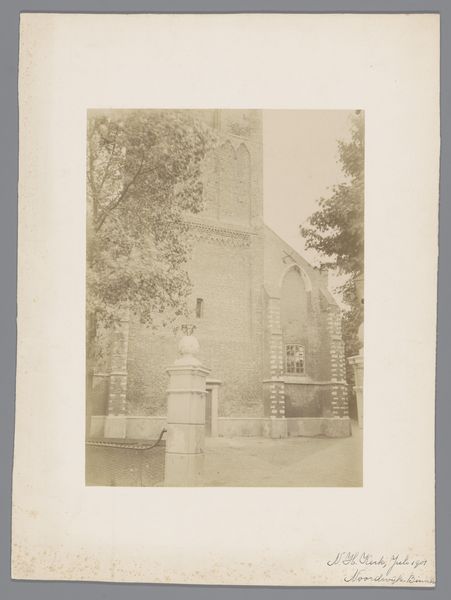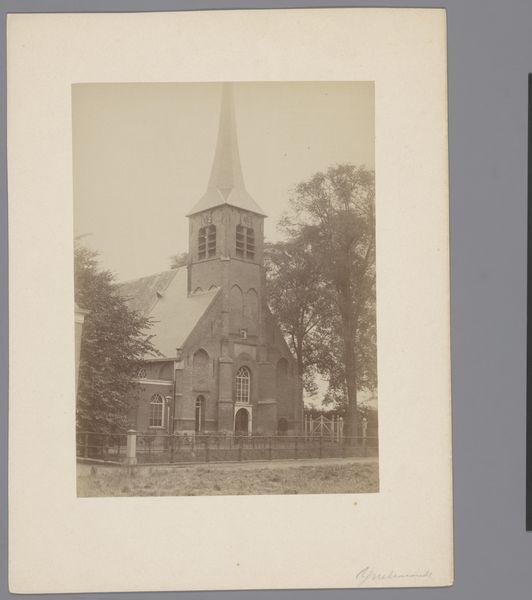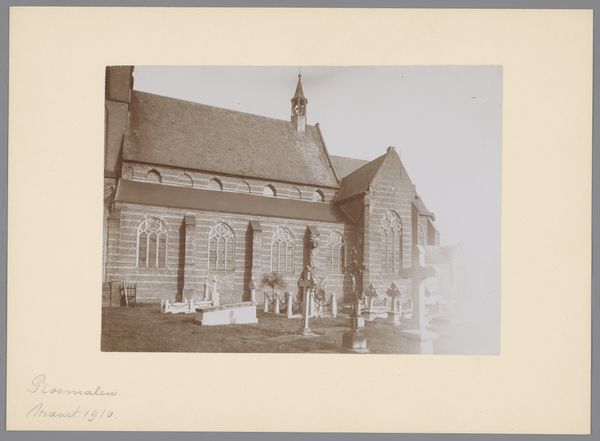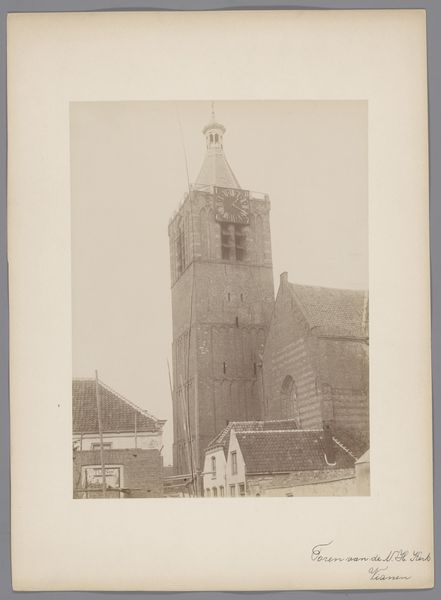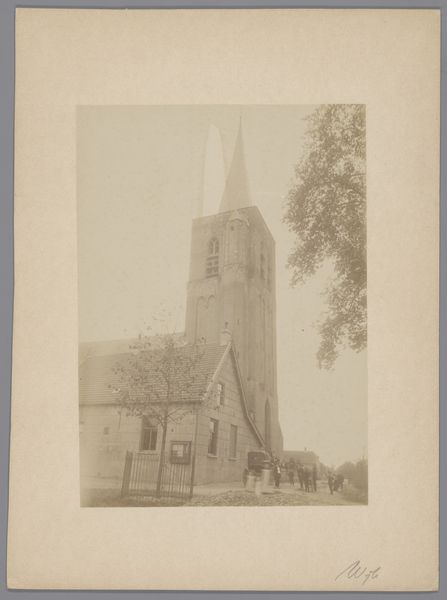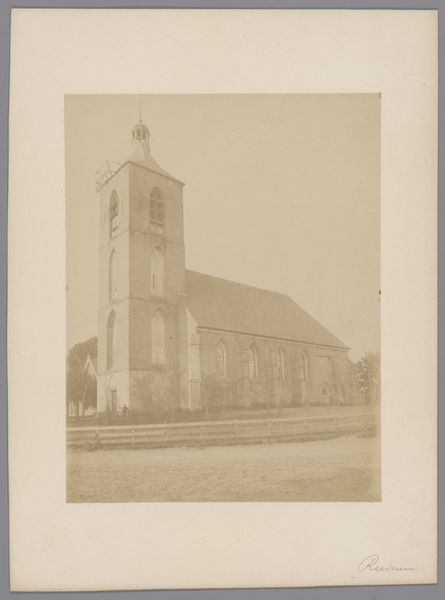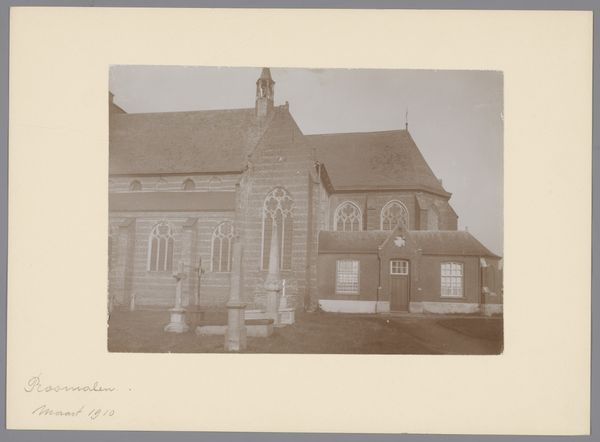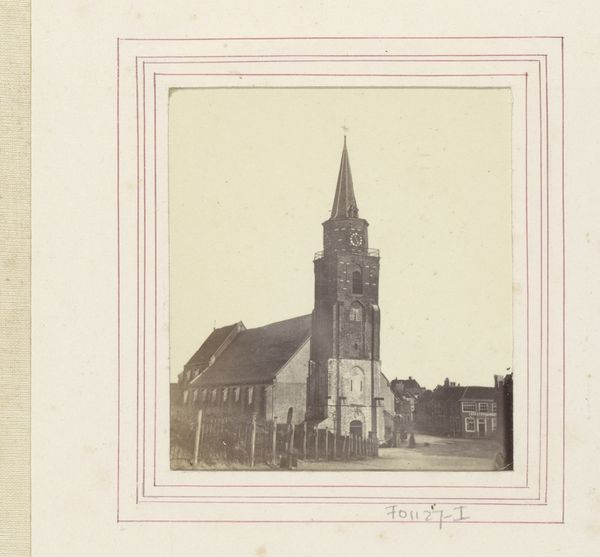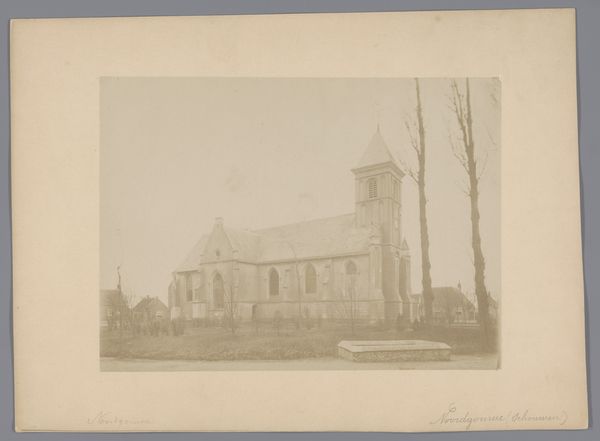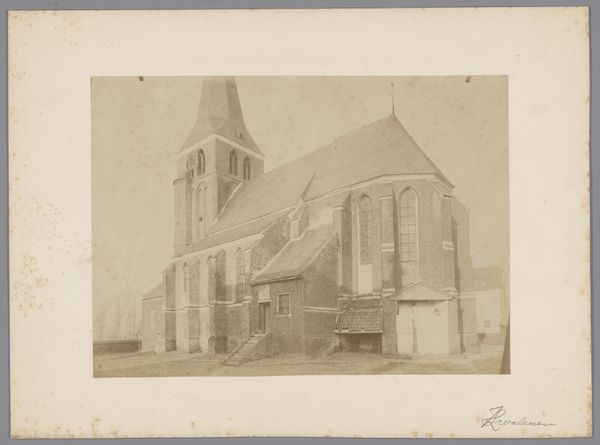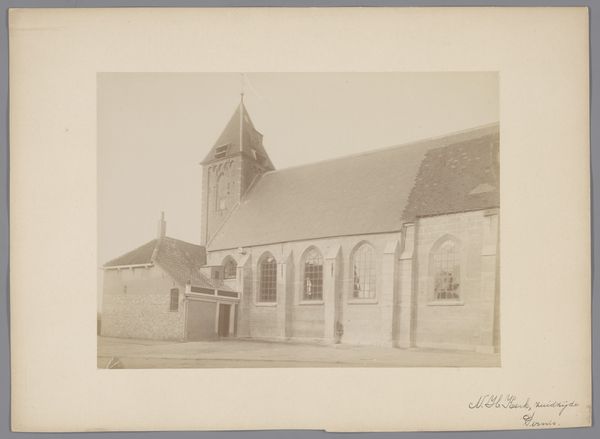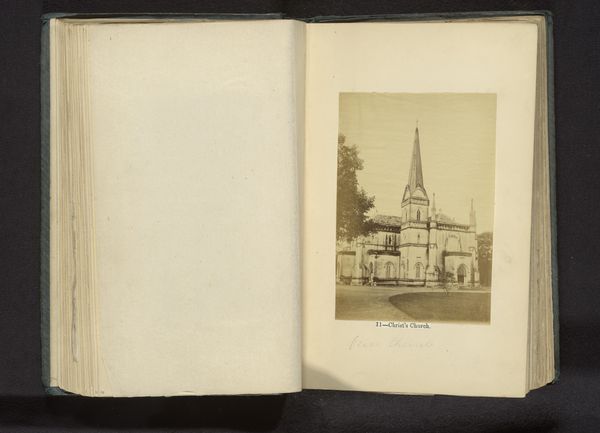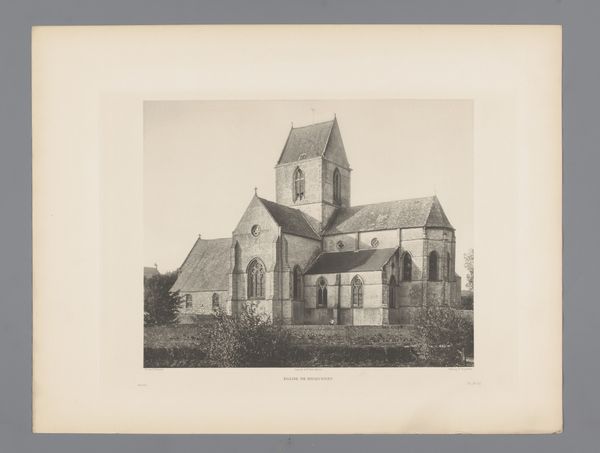
photography, albumen-print
#
landscape
#
photography
#
cityscape
#
albumen-print
Dimensions: height 84 mm, width 52 mm
Copyright: Rijks Museum: Open Domain
Editor: Here we have Ferdinand Carlier’s photograph, “Gezicht op een kerk in Bretagne, Frankrijk,” possibly from 1867. It’s an albumen print, displayed within an album page. It strikes me as rather still, almost timeless. What symbols or deeper meanings can you draw from this seemingly simple image? Curator: Indeed, it seems simple at first glance, but this stillness holds immense weight. Consider the church itself. It's not just a building; it represents faith, community, and tradition – centuries of collective belief embodied in stone. And note the sky -- we can see it meeting at a perfect horizon which makes one consider life’s boundaries and limitations. Editor: So, the church serves as a kind of cultural anchor? Curator: Precisely. In the context of 1867, photography was rapidly evolving. Carlier wasn’t merely documenting a building; he was capturing a moment in time that speaks to enduring values amidst social change. Look at the light— how does it interact with the tower and the smaller structure on the left? Editor: It's subtle, almost muted, highlighting the architectural details but not dramatizing them. Curator: Exactly. The gentleness might evoke a sense of serenity or perhaps the quiet strength of steadfast belief. And there’s an animal visible – likely a horse or donkey – grazing near the edifice. How does that contrast contribute to your overall perception? Editor: It adds a touch of everyday life, bringing the sacred down to earth, I suppose. It doesn't feel separate but intertwined with daily experience. Curator: Beautifully put. It suggests how cultural memory persists in the most ordinary moments and locations. These photographs carry with them stories of origin, collective consciousness. It makes you wonder: What happens when we stop seeing the old stories depicted on our landscapes? Editor: This has been really helpful; it's given me a whole new perspective to consider how an image, like this one, operates on multiple levels, acting as both a historical record and a vessel of cultural memory. Curator: And hopefully, you recognize the importance of imagery as a bridge connecting the personal, the historical, and the universal.
Comments
No comments
Be the first to comment and join the conversation on the ultimate creative platform.
